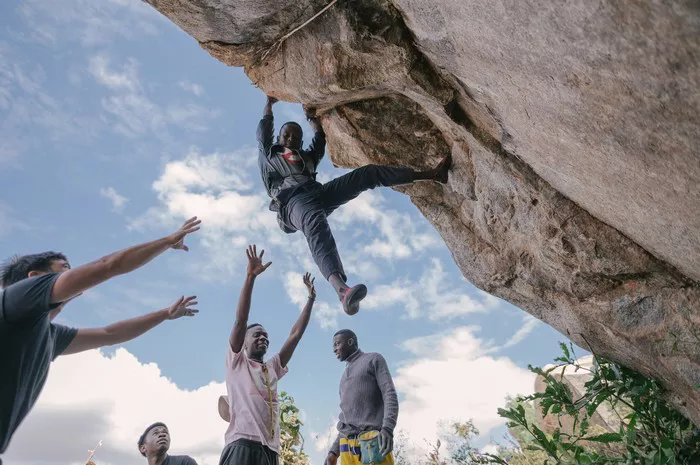Rock climbing is an exhilarating sport that requires both physical and mental strength. Whether you are a beginner or an experienced climber, wearing the right gear can significantly impact your performance and safety. This guide will break down the essential clothing and equipment needed for rock climbing, ensuring you’re prepared for your next adventure.
Understanding the Basics of Climbing Gear
Before diving into specifics, it’s essential to understand the type of climbing you will be doing. There are various styles, including bouldering, sport climbing, and traditional climbing. Each has its unique requirements. However, there are common items that all climbers should consider.
Climbing Shoes: The Foundation of Your Gear
Importance of Climbing Shoes
Climbing shoes are arguably the most critical piece of equipment. They provide grip, support, and protection for your feet. A good pair of shoes can enhance your performance significantly.
Choosing the Right Shoes
Fit: Climbing shoes should fit snugly but not painfully. A tight fit helps improve control.
Material: Most climbing shoes are made from leather or synthetic materials. Leather stretches over time, while synthetic shoes maintain their shape.
Type: There are various types of climbing shoes:
- Aggressive: Best for sport climbing and bouldering, offering excellent precision.
- Moderate: Good for all-around climbing, offering comfort and versatility.
- Neutral: Ideal for beginners, providing comfort for extended wear.
Break Them In
Always break in new climbing shoes before using them for an extended period. This helps to soften the material and create a better fit.
Climbing Harness: Safety First
What is a Climbing Harness?
A climbing harness is a crucial safety device that secures you to the rope. It distributes weight evenly and keeps you safe in case of a fall.
Choosing the Right Harness
Fit: The harness should fit snugly around your waist and legs without pinching. You should be able to move freely.
Types of Harnesses:
- Sport Harness: Lightweight and designed for sport climbing.
- Trad Harness: Offers more gear loops for traditional climbing.
- Bouldering Harness: Minimalist design for short climbs without a rope.
Adjustability
Most harnesses come with adjustable leg loops. Ensure you adjust them for a secure fit.
Climbing Clothing: Comfort and Flexibility
Base Layers
Start with a moisture-wicking base layer. This layer keeps sweat away from your skin, ensuring comfort during climbs.
Material: Look for synthetic fabrics or merino wool.
Fit: The base layer should be snug but not restrictive.
Mid Layers
Depending on the climate, you may need an insulating mid-layer. This layer traps heat while remaining breathable.
Options: Fleece jackets or lightweight down jackets work well.
Layering: Ensure it fits under your outer layer without restricting movement.
Outer Layer
The outer layer protects you from the elements, such as wind and rain.
Jackets: Look for lightweight, waterproof, and breathable options.
Pants: Consider climbing-specific pants made from stretchy materials. Avoid baggy clothing as it can get caught in climbing holds.
Shorts vs. Pants
Choose between shorts or pants based on the weather and your comfort.
Shorts: Great for warm weather; opt for stretchy, durable materials.
Pants: Offer more protection and warmth in colder climates.
Avoid Cotton
Avoid cotton clothing as it absorbs moisture and can become heavy and uncomfortable when wet.
Protective Gear: Staying Safe
Helmet
A climbing helmet is essential for protecting your head from falling rocks and impacts.
Fit: Ensure it fits securely and comfortably.
Types: Look for a lightweight helmet designed for climbing.
Chalk Bag
A chalk bag keeps your hands dry and improves grip on holds.
Material: Look for a durable, lightweight bag.
Accessibility: Choose a bag that’s easy to access while climbing.
Belay Device
If you are climbing with a partner, a belay device is crucial for safety.
Types: Familiarize yourself with different types like tube-style or assisted braking devices.
Accessories for Climbing
Climbing Tape
Climbing tape is useful for protecting your fingers and hands.
Use: Apply it to areas prone to cuts and scrapes.
Gloves
While not always necessary, gloves can provide extra protection for your hands.
Types: Look for lightweight, flexible climbing gloves if you choose to wear them.
Sunglasses
If you are climbing outdoors, sunglasses protect your eyes from the sun.
UV Protection: Ensure they offer good UV protection and fit securely.
Hydration Pack
Staying hydrated is crucial, especially on long climbs. A hydration pack or water bottle should be part of your gear.
Accessibility: Choose a pack that allows easy access to water while climbing.
Weather Considerations
Hot Weather
In hot conditions, prioritize light, breathable clothing.
Materials: Lightweight synthetic fabrics wick moisture away.
UV Protection: Consider clothing with UV protection for extra sun safety.
Cold Weather
In colder climates, layering is key.
Base Layer: Start with a thermal base layer.
Insulation: Use fleece or down for warmth.
Outer Layer: A waterproof jacket is essential for protection against wind and rain.
Rainy Conditions
When climbing in wet weather, a good waterproof jacket is essential.
Breathability: Look for a breathable waterproof jacket to prevent overheating.
Climbing in Different Environments
Indoor Climbing
For indoor climbing, you can wear more casual clothing.
Comfort: Prioritize comfort and flexibility.
Shoes: Use climbing shoes appropriate for indoor gyms.
Outdoor Climbing
Outdoor climbing requires more consideration for the elements.
Durability: Choose durable clothing that can withstand rough conditions.
Protection: Consider the environment—rocky terrain may require more protection.
Conclusion
Choosing the right clothing and equipment for rock climbing is essential for comfort, safety, and performance. Always consider the type of climbing, weather conditions, and personal preferences. Investing in high-quality gear tailored to your needs will enhance your climbing experience, allowing you to focus on the thrill of the climb.
Remember, comfort and safety are paramount. Be prepared, dress appropriately, and enjoy the incredible adventure that rock climbing offers!
Related topics:

